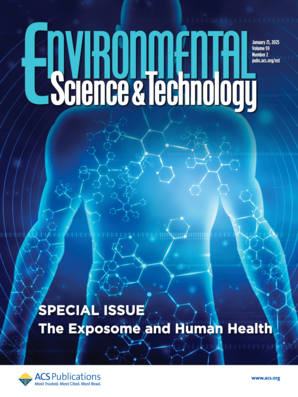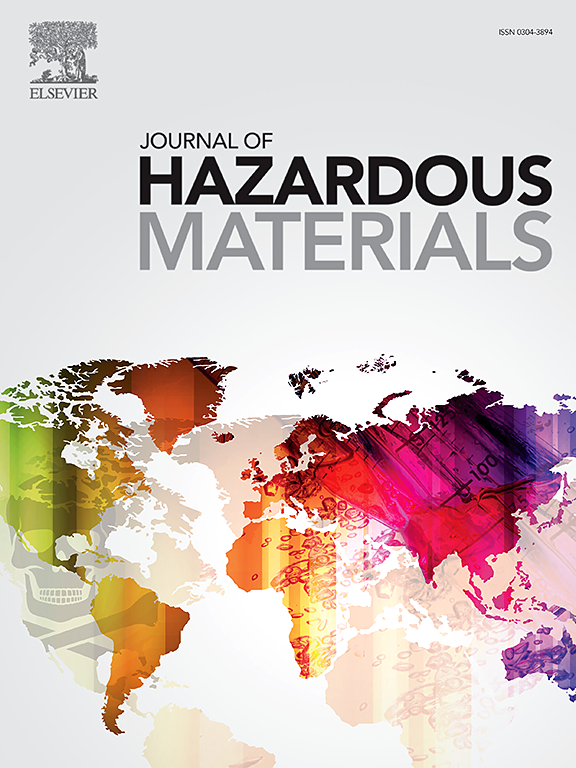Please find all scientific publications of IGB under > scientific publications
For more detailed information please refer to our > library catalogue
31 - 40 of 106 items
- Department:(Dept. 3) Plankton and Microbial Ecology
November 2024
Journal of Hazardous Materials. - 479(2024), Art. 135675
Distinct influences of altitude on microbiome and antibiotic resistome assembly in a glacial river ecosystem of Mount Everest
Xin Liao; Liyuan Hou; Lanping Zhang; Hans-Peter Grossart; Keshao Liu; Junzhi Liu; Yuying Chen; Yongqin Liu; Anyi Hu

October 2024
JAMES. - 16(2024)10, Art. e2024MS004275
A Lake Biogeochemistry Model for Global Methane Emissions: Model Development, Site-Level Validation, and Global Applicability
Zeli Tan; Huaxia Yao; John Melack; Hans-Peter Grossart; Joachim Jansen; Sivakiruthika Balathandayuthabani; Khachik Sargsyan; L. Ruby Leung
October 2024
Water Research. - 268(2024), Art. 122602
Epilimnetic oligotrophication increases contribution of oxic methane production to atmospheric methane flux from stratified lakes
Fan Xun; Muhua Feng; Cheng Zhao; Wenlei Luo; Xiaotong Han; Zhen Ci; Yifan Yin; Rong Wang; Qinglong L. Wu; Hans-Peter Grossart; Peng Xing
October 2024
Molecular Ecology Resources. - 25(2024)1, Art. e14023
Upscaling biodiversity monitoring: Metabarcoding estimates 31,846 insect species from Malaise traps across Germany
Dominik Buchner; James S. Sinclair; Manfred Ayasse; Arne J. Beermann; Jörn Buse; Frank Dziock; Julian Enss; Mark Frenze; Thomas Hörren; Yuanheng Li; Michael T. Monaghan; Carsten Morkel; Jörg Müller; Steffen U. Pauls; Ronny Richter; Tobias Scharnweber; Martin Sorg; Stefan Stoll; Sönke Twietmeyer; Wolfgang W. Weisser; Benedikt Wiggering; Martin Wilmking; Gerhard Zotz; Mark O. Gessner; Peter Haase; Florian Leese

October 2024
Environmental Science & Technology. - 58(2024)44, 19690–19701
Strong Subseasonal Variability of Oxic Methane Production Challenges Methane Budgeting in Freshwater Lakes
Liu Liu; Xin Zhang; Sina Schorn; Tomy Doda; Manchun Kang; Damien Bouffard; Georgiy Kirillin; Jana Milucka; Xiaotao Shi; Hans-Peter Grossart
October 2024
Scientific Reports. - 14(2024), Art. 25821
Chytrid fungi infecting Arctic microphytobenthic communities under varying salinity conditions
Doris Ilicic; Jason Woodhouse; Ulf Karsten; Katherina Schimani; Jonas Zimmermann; Hans-Peter Grossart
September 2024
Science of the Total Environment. - 934(2024), Art. 173188
Tapping into fungal potential: Biodegradation of plastic and rubber by potent Fungi
Sabreen S. Ibrahim; Danny Ionescu; Hans-Peter Grossart
The presence of plastics in our environment is an increasing burden on nature and our health. The authors have now identified fungi isolated from freshwater ecosystems that can efficiently degrade plastic polymers made of polyurethane, polyethylene and tyre rubber. Contrary to previous assumptions, no pre-treatment of the plastics was necessary.

September 2024
Journal of Hazardous Materials. - 477(2024), Art. 135152
Enhanced inhibitory efficiency against toxic bloom forming Raphidiopsis raciborskii by Streptomyces sp. HY through triple algicidal modes: Direct and indirect attacks combined with bioflocculation
Yan Xie; He Zhang; Baiyu Cui; Ruozhen Geng; Hans-Peter Grossart; Peng Xiao; Jun Zuo; Hai Zhang; Zeshuang Wang; Guang Wang; Xudong Wang; Zengling Ma; Renhui Li
September 2024
Nature Communications. - 15(2024), Art. 7233
Unravelling large-scale patterns and drivers of biodiversity in dry rivers
Arnaud Foulquier; Thibault Datry; Roland Corti; Daniel von Schiller; Klement Tockner; Rachel Stubbington; Mark O. Gessner; Frédéric Boyer; Marc Ohlmann; Wilfried Thuiller; Delphine Rioux; Christian Miquel; Ricardo Albariño; Daniel C. Allen; Florian Altermatt; Maria Isabel Arce; Shai Arnon; Damien Banas; Andy Banegas-Medina; Erin Beller; Melanie L. Blanchette; Joanna Blessing; Iola Gonçalves Boëchat; Kate Boersma; Michael Bogan; Núria Bonada; Nick Bond; Katherine Brintrup; Andreas Bruder; Ryan Burrows; Tommaso Cancellario; Cristina Canhoto; Stephanie Carlson; Núria Cid; Julien Cornut; Michael Danger; Bianca de Freitas Terra; Anna Maria De Girolamo; Rubén del Campo; Verónica Díaz Villanueva; Fiona Dyer; Arturo Elosegi; Catherine Febria; Ricardo Figueroa Jara; Brian Four; Sarig Gafny; Rosa Gómez; Lluís Gómez-Gener; Simone Guareschi; Björn Gücker; Jason Hwan; J. Iwan Jones; Patrick S. Kubheka; Alex Laini; Simone Daniela Langhans; Bertrand Launay; Guillaume Le Goff; Catherine Leigh; Chelsea Little; Stefan Lorenz; Jonathan Marshall; Eduardo J. Martin Sanz; Angus McIntosh; Clara Mendoza-Lera; Elisabeth I. Meyer; Marko Miliša; Musa C. Mlambo; Manuela Morais; Nabor Moya; Peter Negus; Dev Niyogi; Iluminada Pagán; Athina Papatheodoulou; Giuseppe Pappagallo; Isabel Pardo; Petr Pařil; Steffen U. Pauls; Marek Polášek; Pablo Rodríguez-Lozano; Robert J. Rolls; Maria Mar Sánchez-Montoya; Ana Savić; Oleksandra Shumilova; Kandikere R. Sridhar; Alisha Steward; Amina Taleb; Avi Uzan; Yefrin Valladares; Ross Vander Vorste; Nathan J. Waltham; Dominik H. Zak; Annamaria Zoppini
September 2024
Limnology and Oceanography Letters. - 9(2024)6, 667-673
Unleashing the power of remote sensing data in aquatic research: Guidelines for optimal utilization
Igor Ogashawara; Sabine Wollrab; Stella A. Berger; Christine Kiel; Andreas Jechow; Alexis L. N. Guislain; Peter Gege; Thomas Ruhtz; Martin Hieronymi; Thomas Schneider; Gunnar Lischeid; Gabriel A. Singer; Franz Hölker; Hans-Peter Grossart; Jens C. Nejstgaard
The study aimed to elucidate the tradeoffs for the utilization of remote sensing data in limnological studies with an example based on the estimation of chlorophyll a due to its importance as a water quality indicator. Assessing atmospheric correction and product limitations ensures alignment with the limnological study.







